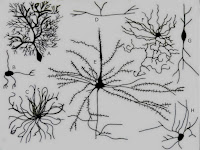Week 9: Space + Art

Few people would be shocked to hear that the human race was, and still is, fascinated by all things space. I think that part of this fascination comes from the fact that space is relatively unknown and most of the things about it will not be uncovered during any of our lifetimes. Copernicus' work on the sun centered universe But, this does not stop people from wondering and trying. The wonder with space dates back to the times of the ancient Greeks and Romans, who named the planets after their gods and continued into Renaissance times with Galileo and Copernicus, one of the first to postulate that the earth rotated around the sun and not the other way around. Even today people continue to look to space as inspiration. Many works of science fiction deal with space exploration or colonization and, in doing so, create these fantastic images of a world just beyond our reach. Some artists have gone in the opposite direction and have captured what space...




